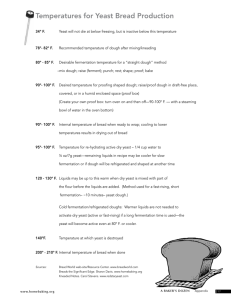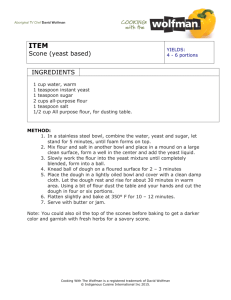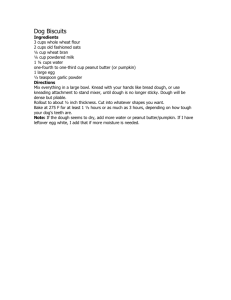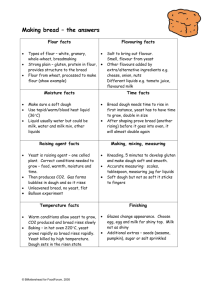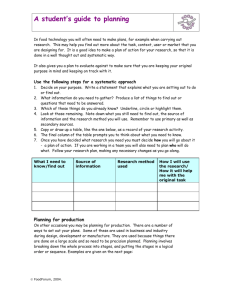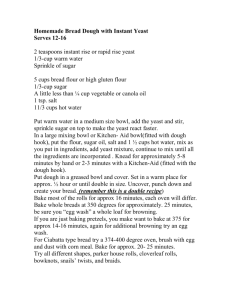Yeast Fermentation Lab: Sugar Concentration & CO2 Production
advertisement
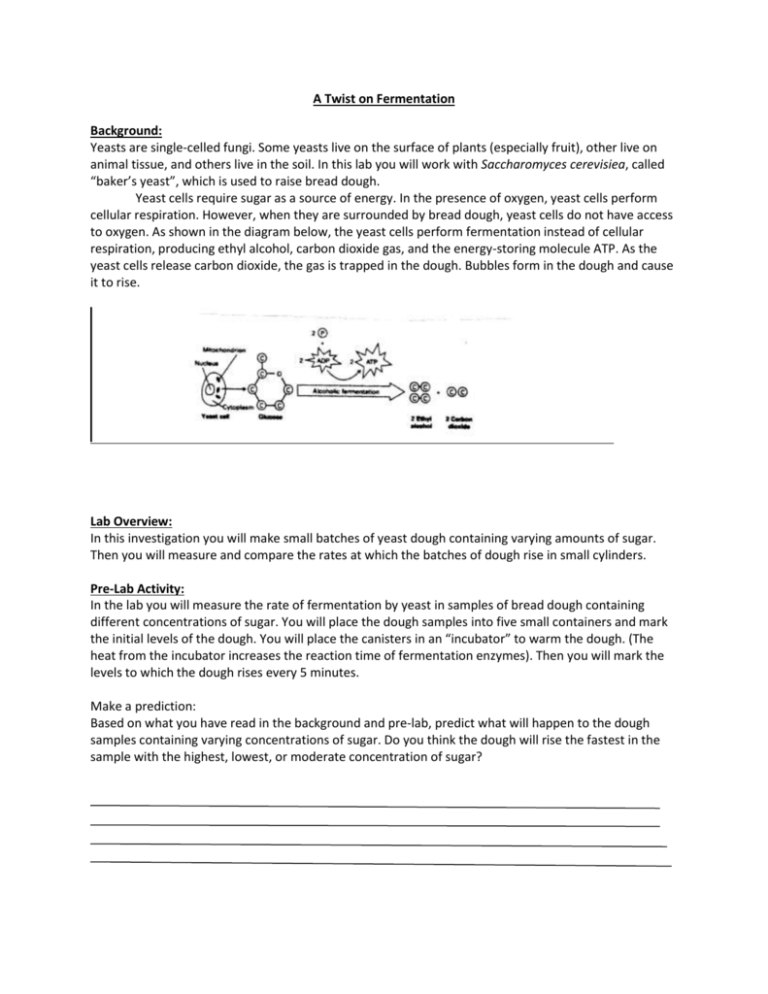
A Twist on Fermentation Background: Yeasts are single-celled fungi. Some yeasts live on the surface of plants (especially fruit), other live on animal tissue, and others live in the soil. In this lab you will work with Saccharomyces cerevisiea, called “baker’s yeast”, which is used to raise bread dough. Yeast cells require sugar as a source of energy. In the presence of oxygen, yeast cells perform cellular respiration. However, when they are surrounded by bread dough, yeast cells do not have access to oxygen. As shown in the diagram below, the yeast cells perform fermentation instead of cellular respiration, producing ethyl alcohol, carbon dioxide gas, and the energy-storing molecule ATP. As the yeast cells release carbon dioxide, the gas is trapped in the dough. Bubbles form in the dough and cause it to rise. Lab Overview: In this investigation you will make small batches of yeast dough containing varying amounts of sugar. Then you will measure and compare the rates at which the batches of dough rise in small cylinders. Pre-Lab Activity: In the lab you will measure the rate of fermentation by yeast in samples of bread dough containing different concentrations of sugar. You will place the dough samples into five small containers and mark the initial levels of the dough. You will place the canisters in an “incubator” to warm the dough. (The heat from the incubator increases the reaction time of fermentation enzymes). Then you will mark the levels to which the dough rises every 5 minutes. Make a prediction: Based on what you have read in the background and pre-lab, predict what will happen to the dough samples containing varying concentrations of sugar. Do you think the dough will rise the fastest in the sample with the highest, lowest, or moderate concentration of sugar? Pre-Lab Questions 1. What is the difference between single celled yeast ( a eukaryotic cell) and a prokaryotic cell? (Look at the diagram) 2. What are the products of fermentation by yeast cells? 3. How do yeast cells benefit from fermentation? 4. How can the production of CO2 be used to measure the rate of fermentation? How does bread rising illustrate this? Materials Incubator or incubator substitute Incubator substitute: plastic shoe box, heating pad 5 clear film canisters or empty prescription bottles Permanent marker Masking tape Dough 1 g sugar Laboratory balance Food color Clock or watch Metric ruler Read through the procedure and identify the following: Independent Variable: Dependent Variable: Controls Write the question for this experiment: Hypothesis: Data Table 1 Time 0 Canister Change in Level of Dough from Initial Level (mm) 1/8 Canister ¼ Canister ½ Canister 1 Canister 5 min 10 min 15 min 20 min 25 min 30 min 35 min Plot 5 line graphs on the same grid. The y axis should represent change in dough level in mm, the x axis should represent time in minutes. Be sure to label the axes and title your graph Analysis and Conclusions 1. The rate at which the dough rises is calculated by dividing the distance the dough rises by the time period (mm/minutes). Calculate the initial rate of rising of each dough sample (the initial rate is the rate for the first 5 minutes. Show your work! Canister 0 Canister 1/8 Canister 1/4 Canister 1/2 Canister 1 2. If you doubled the concentration of yeast in the dough, how do you think your results might change? 3. Write a conclusion for this experiment. Make sure to include: a restatement of your hypothesis, whether your hypothesis was supported or not supported, what errors if any were made, how would you improve the experiment, and what did you learn? (10 pts) Some content from this lab was taken from: Campbell, Neil A., Brad Williamson, and Robin J. Heyden. "Investigative Lab 6."Biology: exploring life. Laboratory Manual ed. Needham, Mass.: Pearson :, 2004. 211-217. Print.
